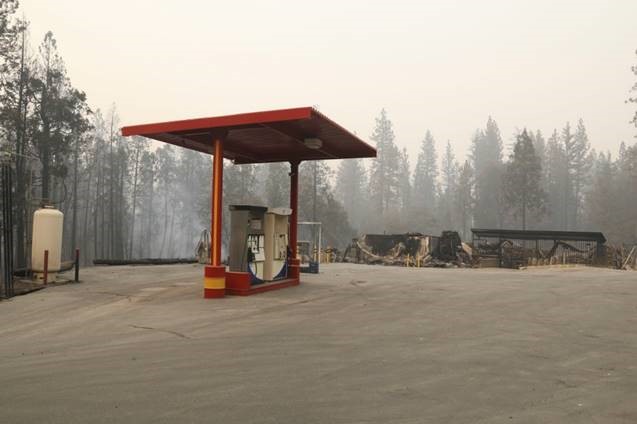Geotechnical Engineering

The Recovery Engineering Geologist provides technical assistance to program divisions within the agency. The duties of the engineering geologist include evaluating geotechnical work plans, making recommendations on geologic investigative techniques, overseeing and conducting field activities and reviewing and analyzing geologic reports. The engineering geologist is licensed as a Certified Engineering Geologist and works with other engineers and geologists, and seismologists and scientists from federal, state and local government as well as professionals from the private sector.
The Associate Civil Engineer (ACE) provides technical assistance to program divisions within Cal OES. Recovery’s ACE also coordinates damage assessments with FEMA for the purpose of obtaining federal major disaster declarations, in addition to coordination, training, mobilization and program support for the Safety Assessment Program.
Slope Stability Guidance
Types of Mass Wasting
Most common types of mass wasting phenomena are landslides, mud/debris flows and rock falls. These downhill mass movements can be highly destructive, dangerous and even deadly. Fortunately, there are some inexpensive and relatively easy steps that can be taken to increase slope stability and decrease the likelihood of a mass wasting event such as a landslide. Some simple methods that can help to stabilize slopes are listed below. In any high risk situation where a landslide has a potential to endanger human safety, a professional geotechnical expert such as a civil engineer or a certified engineering geologist should always be consulted before any slope stabilizing work is undertaken.
Water
Often, the single most important element that drives slope failures is the presence of excess water within the slope. This is why the majority of slope failures happen shortly after heavy rains. North facing slopes are more likely to fail because they tend to retain more moisture than the south facing slopes. Excess water can enter the slope due to over-irrigation, broken sprinkler pipes or water mains. Leaky swimming pools and septic tanks can also contribute to slope saturation. It is very important to keep the slope free of puddles or depressions where water can pond and infiltrate into the soil. Diverting as much storm water as possible away from the slope helps to prevent failures.
Soil/Rock Type vs Stability
Soils with lots of clay/silt size particles are said to have cohesion. Cohesion means that the particles are attracted to each other by electrostatic forces resulting in somewhat greater slope stability than that of sandy soils. Sandy soils have no cohesion so they can flow more easily especially when the pores between the sand grains are fully saturated with water. Hard rocks like granite can form very steep and stable cliffs such as El Capitan in Yosemite. However, because of the natural joints/cracks in the rock mass they can fail catastrophically, without warning, and produce deadly rock falls.
Vegetation/Groundcover
Vegetative cover can help to stabilize slopes in several ways. The most obvious way is that root structure can help to “bind” soil particles together, keeping it in place and decreasing erosion. Also, plants especially evergreen shrubs evapo-transpire moisture helping to keep the slope from being fully saturated with water. When selecting plants for erosion control or slope stabilization, it is important to use fast growing species that have extensive and deep root systems. Examples of plants that work well in most California climate zones are Coyote Bush, Manzanita, and California Sagebrush. Covering a slope with thin layer (0.5”) of bark, compost, or wood mulch can reduce erosion thereby improving slope stability. Mulch or compost also helps vegetative cover survive dry/hot periods by decreasing water losses due to evaporation and by providing plant nutrients.
Synthetic Groundcovers
Plastic sheeting and liners are often used to keep rainwater from soaking into an unstable slope. Care should be taken to securely fasten the liners to the slope with sandbags, rocks, mulch, or other material. Heavy rain storms are often accompanied by strong winds that can quickly compromise the integrity of the liners. Plastic mesh or burlap fabric don’t prevent infiltration of water into the slope but can be effective in reducing erosion.
Excavation and Slope Geometry
In general, the steeper the slope the more likely it is to fail. Reducing slope angle also reduces driving forces and increases stability. Removal of soil mass from the head of a slide reduces driving forces acting on a slide and improves slope stability. Removing soil material from the toe area of a landslide decreases slope stability.

